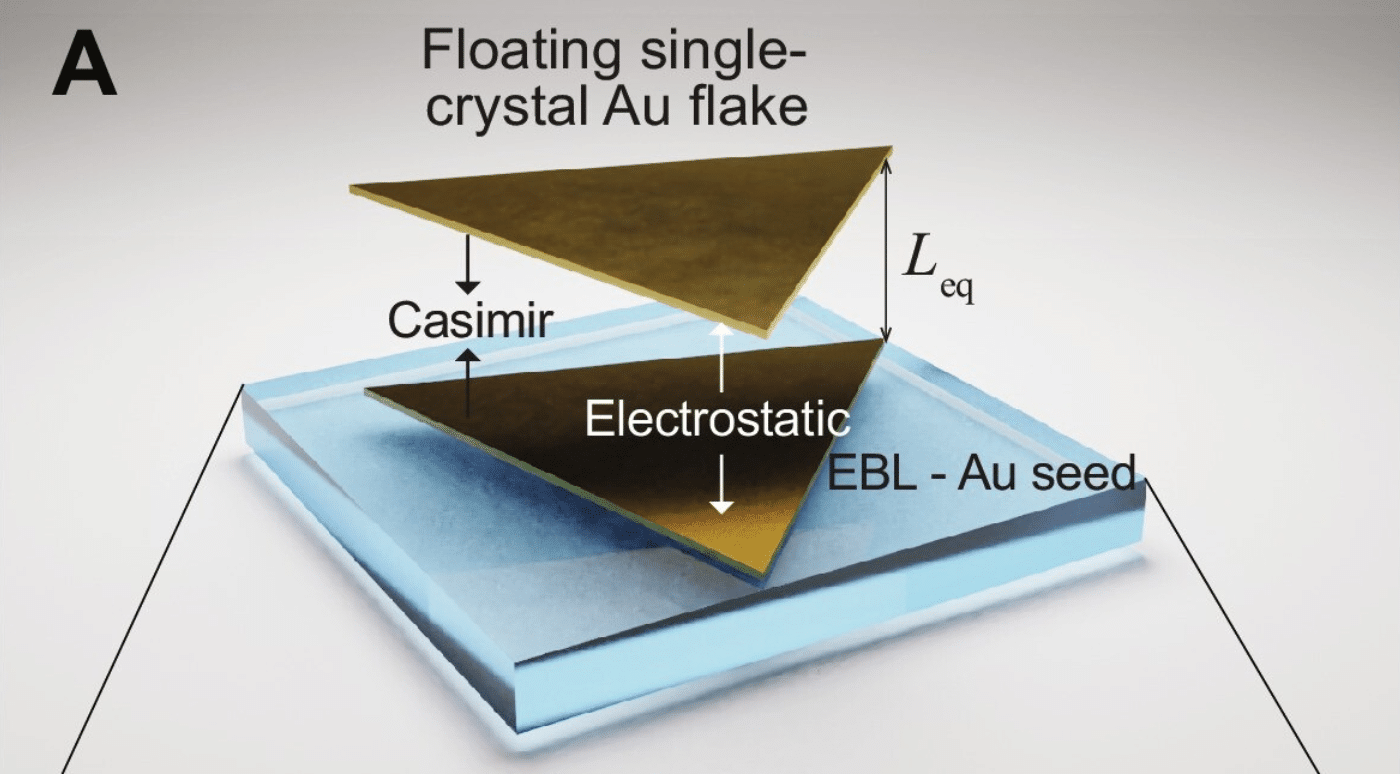
Quantum forces have been used for the first time to automatically assemble a microscopic device
⇧ [VIDÉO] You may also like this partner content
In a new study recently published in the journal
Advancement of scienceResearchers present a microscopic gold device that traps light. In the assembly process, they used two natural/apparent forces operating at the quantum level: the electrostatic force and the Casimir effect.
The Casimir effect is a phenomenon that occurs when two neutral (i.e. not electrically charged) plates are placed close to each other in an almost perfect vacuum. Hendrik Casimir, who discovered it in 1948, explains that these surfaces attract each other due to fluctuations of quantum fields present in the space between them. This “vacuum” actually contains temporary fluctuations as particles and antiparticles quickly appear and disappear, thus generating forces that affect physical objects. It should be noted that the attractive force in the Casimir effect is very weak and can only be observed on microscopic scales.
In a new study, scientists from Chalmers University of Technology in Sweden have found a way to exploit this phenomenon. They used the Casimir effect to spontaneously assemble the microstructure. Therefore, they did not need to physically handle the components of the device during certain stages of assembly.
A cavity to trap light
Betul Kucucuz, the director of the study, and his colleagues created a kind of tiny golden cavity to trap light. This device consists of two small golden plates in the shape of a parallel triangle, between which light bounces without being able to escape easily. This trapping of light can be used to enhance certain optical properties or to keep light focused in a small area.
To produce the device, the researchers first used a gold plate with a size between 4 and 10 microns. This serves as the bottom wall of the cavity. It is then attached to a piece of glass. The second wall was not installed manually, but by the Casimir effect and electrostatic force.

Representation of the golden device and the forces acting between the two plates. © Betul Kucucuz et al.
Casimir effect and electrostatic force
In order to attach the other triangular wall of the cavity, the researchers immersed the first plate printed on the glass in the salt water in which the other gold plates were immersed. The electrical charges in the solution created electrostatic forces that could influence and manipulate the positions of the free plates. The movement of these elements was also due to the Casimir effect, which scientists claim to have observed under a microscope.
See also

The two forces – a result of the Casimir effect and the electrostatic force – finally adjusted the free plate before aligning itself parallel over the first, which was fixed to the glass. However, it is possible that other, unspecified forces were involved in assembling the device, according to the scientists.
This method could allow the size of the cavity to vary slightly, Kocucuz and his team say. The distance between the two walls can range between 100 and 200 nanometers. To create the differences, it would be sufficient to adjust the salt concentration in the solution in order to change the intensity of the electrostatic force. According to the researchers, it will also be possible to place objects between the two parallel plates, but such a feat will require further research, which the team is now planning to implement.
source : Advancement of science

“Organizer. Social media geek. General communicator. Bacon scholar. Proud pop culture trailblazer.”
